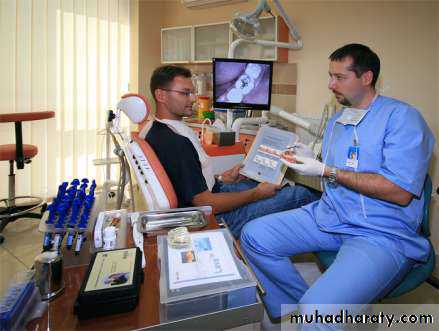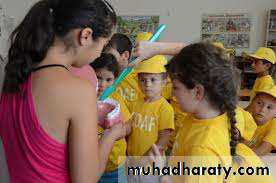In 1948 the World Health Organization defined oral health as “a complete state of physical, mental, and social well-being, and not just the absence of infirmity.”
1. Physical well–being assumes the ability to function normally in activities such as speaking, eating, and moving around.
2.Mental well–being implies that there is no burden of fear, anxiety, stress, depression, or other negative emotions.
3. Social wellbeing relates to one’s ability to participate in society, fulfilling roles and duties.
Oral health is fundamental to overall health,
wellbeing and quality of life.A healthy mouth enables people to eat, speak, work and socialize without pain, discomfort or embarrassment.
“The mouth is the gateway to the rest of the body, a mirror of our overall wellbeing.”
Along this, oral health must be perceived as a critical component of general health.
Dental disease negatively impacts general quality of life, affecting not only physical wellbeing but also psychological and social wellbeing.
Further, the mouth is often an entry point for infections, which may spread to other parts of the body.
. A person whose appearance and speech are impaired by dental disease can experience anxiety, depression, poor self–esteem and social stigma which in turn may inhibit lucky chance for education, employment and alter the ability to assist and build social relationships”.
Oral health problems can affect a person's ability to maintain a job or get promotions. They can also contribute to lowered academic achievement and goals.
These effects have increased when a deformity due to the oral health condition is involved
There are profound inequalities in caries status,
between countries, and that the distribution ofdisease in a population is a changing dynamic.
Health inequalities are the systematic, structural
differences in health status between and within social groups within the population.The term ‘‘health inequalities’’ is closely linked to‘‘social determinants of health’’.
Health inequalities can be seen as an
outcome of Social Inequalities
Studies showed Children from a deprived background may have five time more tooth
decay than children from more affluent backgrounds. The World Health Organization advocates using Health Promoting Schools programs to promote general and oral health.
Oral health education is a key component in any School Oral Health Program.
“ You cannot educate a child who is not healthy, and you cannot keep a child healthy who is not educated.”
Health education is any combination of learning experiences designed to facilitate voluntary actions conducive to health.
Integration of oral health into the school curriculum
EDUCATIONAL AIDS USEDIN HEALTH EDUCATION Main constituent of the armamentarium of the health education process.
Auditory aids
Visual aids
A combination of audio-visual aids.
Methods of health education
1. Individual approach2. Group approach
3. Mass approach
a. Projected aids:
Films or Cinemas
Film Strips
Slides
Overhead Projectors /or Transparencies
Bioscopes
Video cassettes
Silent films
b) Non-Projected aids:
Blackboard
Pictures, cartoons, photographs
Charts, posters
Flip charts, flashboards
Flannel boards
Printed materials
Model, sample
Creates a better presentation….
They include: Televisions
Tape and slide combinations
Video cassettes players
and recorders
Motion pictures or cinemas
Multimedia computers
Also include traditional media
Folk dances
Folk songs
Puppet shows
Dramas
Advantages
Can be done in a dentist’s consultation room. Discussion, argument and persuasion of an individual to change his behavior is possible.
There is opportunity for the individual for asking
questions and clearing doubts.
----
Disadvantages:
Only a small no. can benefit
Health education is given only to
those who come in contact with the dental
surgeon or with public health personnel
a. Chalk and talk (lectures)
b. Symposiumc. Group Discussions
d. Panel discussions
e. Workshop
f. Conferences or seminars
g. Role playing/socio dramas
h. Demonstrations
a) Television
b) Radioc) Newspapers/press
d) Documentary films
e) Posters
f) Health exhibition
g) Health magazines
h) Information booklets
i) Internet
Health promotion
DEFINITION
“the process of enabling people to increase control over, and to improve their health”.
Five priority action areas for health promotion:
1. Building healthy public policy2. Creating supporting environments for health
3. Strengthening community action for health
4. Developing personal skills
5. Re-orienting health services
APPROACHES TO HEALTH PROMOTION
1. Preventive
2. Behavior change
3. Educational
4. Empowerment
5. Social change
Individual Factors
1. Improve education and awareness2. Reduce barriers to health care seeking
practices
Social Environment
Marketing healthy
behavior influencing social
and family norms that link
to oral health knowledge,
attitudes, beliefs, values.
Environmental conditions
Water fluoridation
Restricting marketing and
improving labelling of food
products
A number of systematic reviews have been conducted on the available evidence for the effectiveness of school-based behavioral interventions .
These have shown that oral health education can be effective in increasing knowledge in the short term and to some extent, behavior such as tooth brushing and healthy eating. However there is a limited evidence for its effectiveness on children’s oral health in terms of reducing dental plaque and dental caries.






































